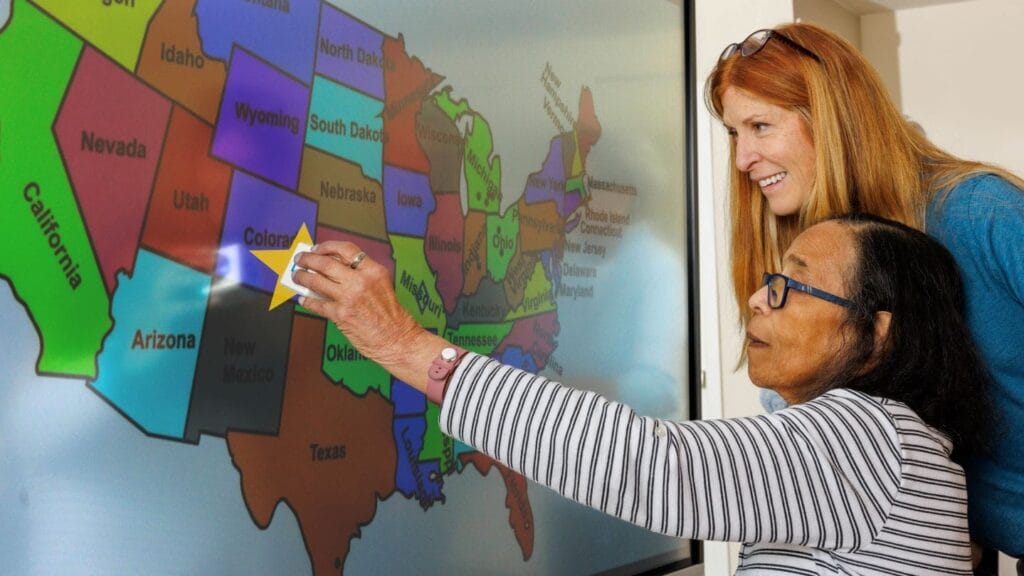
A popular whiteboard tech tool increasingly being used in grade school is now making inroads with senior living and care settings. But rather than being forced to relearn basic arithmetic, older adults are using this tech to enhance their health and well-being, developers said.
SMART Technologies, the company behind SMART interactive displays, is making its first foray into long-term care spaces in the United States and Canada; SMART and partner LifeLoop announced a new pilot program in Colorado earlier this month.
The interactive wall display can be used within senior living communities and skilled nursing facilities in several ways, from education to entertainment.
Activities could range from providing an interactive lunch menu to letting residents “feed fish” as the whiteboard turns into a virtual aquarium, SMART executives recently explained to the McKnight’s Tech Daily.
Over the past few years, SMART has been working on pilot studies with senior living and care spaces in Australia and Spain.
In the latter country, SMART was asked to produce a report for the government about its displays’ effects and use cases.
Although the report has yet to be released, out of the 200 settings in the program, 93% said they’d recommend the SMART board, Jeff Lowe, SMART’s executive vice president, told McKnight’s.
“Many seniors have never seen anything like this, although their kids, nephews and nieces, they see this every day,” Lowe said. “The tool gets people up, out of their rooms and interacting with the board, with their colleagues: That in a nutshell is the report we pulled together.”
Many providers are trying to find interactive tools for residents, either for communication or entertainment, or both.
In its application for residents living with dementia, SMART’s interactive and gamified elements, and older adult-friendly touch tools, are similar in concept to the Tovertafel “Magic Table,” which creates a projection on a surface for seniors to interact with.
Even in congregate settings, loneliness and isolation are problems faced by residents, often due to cognitive or physical limitations that affect their ability to interact with one another.
Sarah Richards, SMART’s marketing director, told McKnight’s that she’d witnessed the challenges addressing seniors’ social challenges firsthand within her family.
“I remember my own grandmother sitting in her room, in her senior residence,” Richards told McKnight’s. “She was not very mobile. I asked her, ‘What do you do all day long?’ And she said, ‘I just spend time with my memories.’”
Many interactive display tools, including SMART, television-based platforms and even virtual reality, now are designed to allow older adults to showcase places and memories important to them with peers, Richards noted.
Overall, Lowe said he was excited to work with senior living communities on technology that was aimed at fostering positive outcomes.
“Lots of senior living technology is about saying, ‘Let’s avoid something bad from happening,’” Lowe said. “There’s not as much technology around [making the pitch] ‘Let’s make something good happen.’ We’re exploring that right now.”


